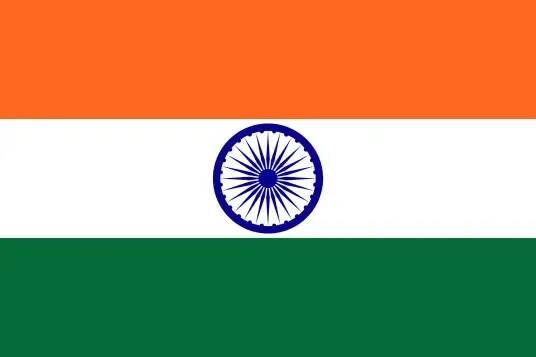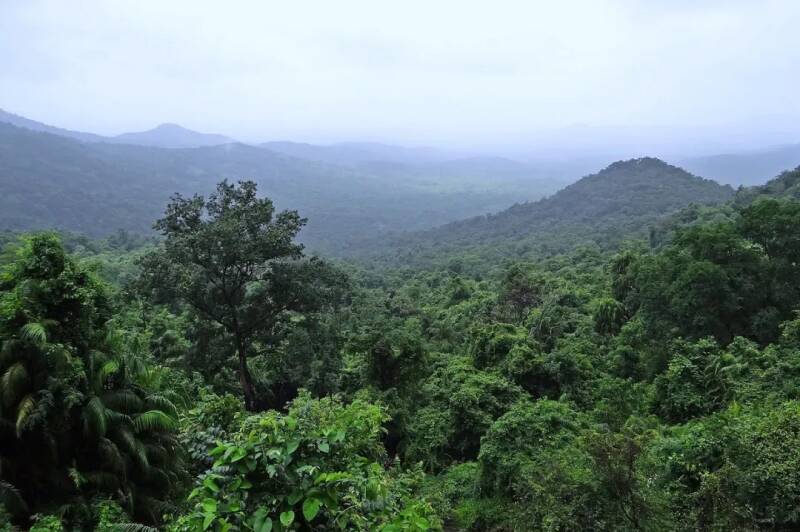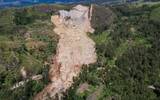Introduction of varieties grown in Indian coffee producing areas in Asian countries
In Asia, there are many coffee producing countries, such as Laos, Indonesia, East Timor, Thailand, India, China and Myanmar.
India India
The Republic of India (The Republic of India), located in South Asia, is the largest country in the South Asian subcontinent, bordering China, Nepal and Bhutan in the northeast, Bangladesh in the northeast, Myanmar in the east and Pakistan in the northwest. It is bordered by the Bay of Bengal to the east and the Arabian Sea to the west, with a land area of about 2.98 million square kilometers, with 29 states and 7 central jurisdictions.
The Indian flag is rectangular and consists of three equal horizontal rectangles of orange, white and green, with a blue wheel with 24 axes in the center. Orange symbolizes courage, dedication and selflessness. it is also the color of the robes of Hindu priests. White represents truth and peace. Green represents prosperity, confidence and human productivity. Falun is one of the lion head patterns of the Buddhist sacred stone pillar built by Ashoka, the third monarch of the Peacock Dynasty in India, collectively known as "Ashoka Falun", symbolizing truth and morality, as well as the ancient civilization of India. The 24 axes of Falun can represent 24 hours of the day, symbolizing that the country is moving forward all the time.

Stretching south from the Himalayas to the Indian Ocean, there are mountain areas in the north, the Indus Ganges plain in the middle, and the Deccan Plateau and its coastal plains on both sides of the south. The plain accounts for about 40% of the total area, mountains account for 25%, and the plateau accounts for 1x3, but most of these mountains and plateaus are no more than 1000 meters above sea level.
It is hot all over India, and most of it belongs to tropical monsoon climate, while the Tal Desert in western India has a tropical desert climate. India's climate is divided into rainy season (June-October), dry season (March-May) and cool season (November-February). With the cooperation of tropical monsoon climate and fertile soil conditions such as alluvial soil and tropical black soil suitable for agricultural production, most of the land can be used for agriculture, and crops can grow all the year round, with unique natural conditions.

Coffee producing area
Most Indian coffee trees are planted in four states: Tamil Nadu, Karnataka, Kerala and Andhra Pradesh. Each state can be subdivided into small production areas according to the geographical environment. The collection period is from October to February of the following year, mainly planting Arabica and Robusta varieties, of which Robusta accounts for more than 70% of India's output.
Tamil Nadu: located in the southernmost part of India, mainly composed of giant Indian temples and rich in flora and fauna, Tamil Nadu is one of the major agricultural areas in India. Coffee is mostly grown in areas such as Pulney, Nilgirl and Shevarog, at an altitude of 600-2000 meters.
Karnataka (Karnataka): located in southwestern India, it is rich in natural resources, has a wide variety of crops and produces the highest coffee. The Bababudangiri region of the state is considered to be the birthplace of Indian coffee. The main sub-producing areas include Chikmagalur, Coorg and Manjarabad, which are planted at an altitude of 700-1500 meters.
Kerala (Kerala): also located in southwestern India, it is also a high-yielding area, where the Malaba coast is located, so the monsoon Malaba and organic coffee develop better than other areas, with sub-producing areas of Travancore and Wayanad, growing at an altitude of 400-1600 meters, and basically growing Robsta outside Arabica at higher elevations.
Andhra Pradesh (Andhra Pradesh): the East Gaozhi Mountains stretch along the east coast of India, providing the altitude needed for coffee cultivation. Coffee production in this area is relatively small, mostly in Arabica, and is planted at an altitude of 9-1100 meters.
Important Notice :
前街咖啡 FrontStreet Coffee has moved to new addredd:
FrontStreet Coffee Address: 315,Donghua East Road,GuangZhou
Tel:020 38364473
- Prev

More than 2000 people were buried! Landslides hit the coffee industry in Papua New Guinea
Recently, Papua New Guinea, located in Oceania, has suffered a series of disasters and suffered serious losses. According to media reports, a serious landslide occurred in the Mulitaka area of Nga Province in northern Papua New Guinea on the 24th, killing more than 2000 people and exceeding 670 people. It is understood that in this serious
- Next

Drinking Ruixing coffee out of the towel?! Customer service response: It is pulp fiber
▲ Click to pay attention| Daily Boutique Coffee Culture Magazine Coffee Workshop Since Luckin's Lime C series was put on the shelves, its refreshing taste has been deeply loved by consumers. However, recently, some consumers bought a cup of lemon C drink and felt foreign while drinking it. She thought it was lemon pulp fiber at first, but after realizing that she couldn't chew it,
Related
- Being chased out of the rain in front of Starbucks?! Store: Sheltering from rain under umbrellas poses a safety hazard
- The white moonlight has changed?! Lucky launches "Big Winter Pear American"
- Hand-brewed coffee three-stage method, high-sweet and universal brewing method to share! What does the high sweet water level of hand-brewed coffee mean?
- What is the difference between raw, refined and full espresso coffee? How to extract espresso and taste good?
- A complete list of coffee bean names and their meanings! What is Yejia Shefi coffee? Where is Mantelin coffee?
- What grade does Arida Manor Kaduai coffee beans belong to? What treatment is Arida ASD slow anaerobic sun exposure?
- The milk tea cup becomes smaller?! Overlord Tea Girl launches a new "Return to Yunnan" series
- Accused of selling counterfeit and high-priced coffee beans! Well-known boutique coffee brand "Oukelao" bowed and apologized!
- How to make espresso dumplings? Can I eat coffee and glutinous rice balls together?
- Save the unformed and stagnant powder cakes in one second! What is the problem with stagnant water in the powder bowl of the espresso machine?

